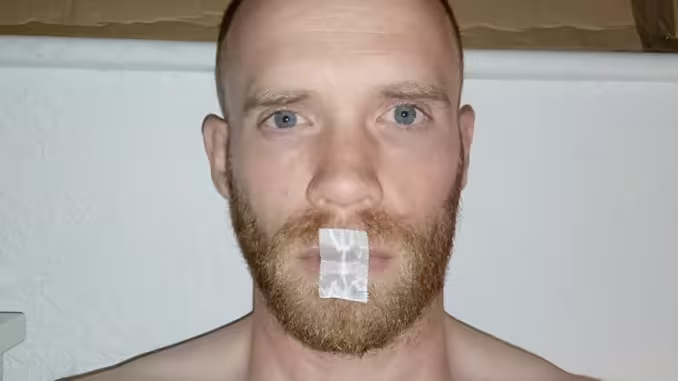
I’d heard of the many benefits of nasal breathing from a few sources, including Wim Hof, before I decided to try it for myself. I was forced into action having read Breath by James Nestor, where the author tried many nasal breathing experiments, including taping his mouth at night.
It sounds daunting, and in fact in the first few days it can be quite unpleasant, but slowly you unlock the benefits. Those include improvements to circulation, reduction in snoring and sleep apnoea, and strengthening the muscles of the throat.
I tried mouth taping for 90 consecutive days and used wearable data to track any changes to my sleep.
Mouth taping at night
The practice is exactly as it sounds – you apply a piece of tape to your mouth before bed and sleep with it on. While there are companies quick to market mouth taping products, all you really need is standard surgical tape such as Transpore 3M. The reason this is sufficient is because you don’t actually need to tape the entire mouth shut. Applying a vertical piece of tape on the middle third of your mouth should be sufficient, while allowing you to consciously open the side of your mouth should you need additional air.
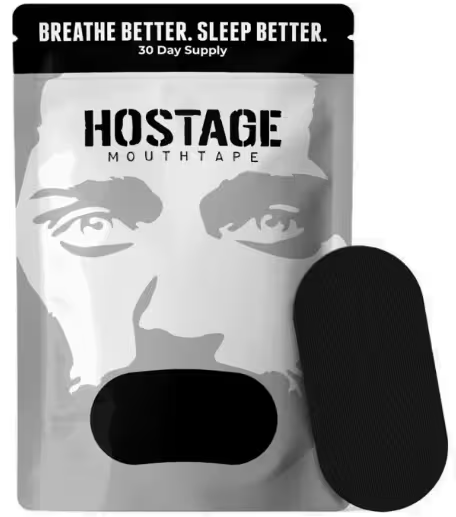
As a price comparison, I use roughly 6cm of my 2.5cm x 9.1m 3M tape every night, making it £5 for a 5 month supply. Commercial mouth tape retails for around £20-30 per 30 patches, which would be a quite ridiculous ~£300 per year.
Mouth taping considerations
You are encouraged to first apply mouth tape during waking hours. This is to familiarise yourself with the sensation of purely nasal breathing. This can be done for an hour at a time, ideally when your breathing isn’t in high demand, so not during intense exercise. I skipped this step but in hindsight I think I would have benefitted from this introductory practice.
My first night of mouth taping happened to be when I had family staying over, and my wife’s cousin was keen to try this out as well. We both woke up the next morning with the tape applied to our hand, with no memory of how it got there.
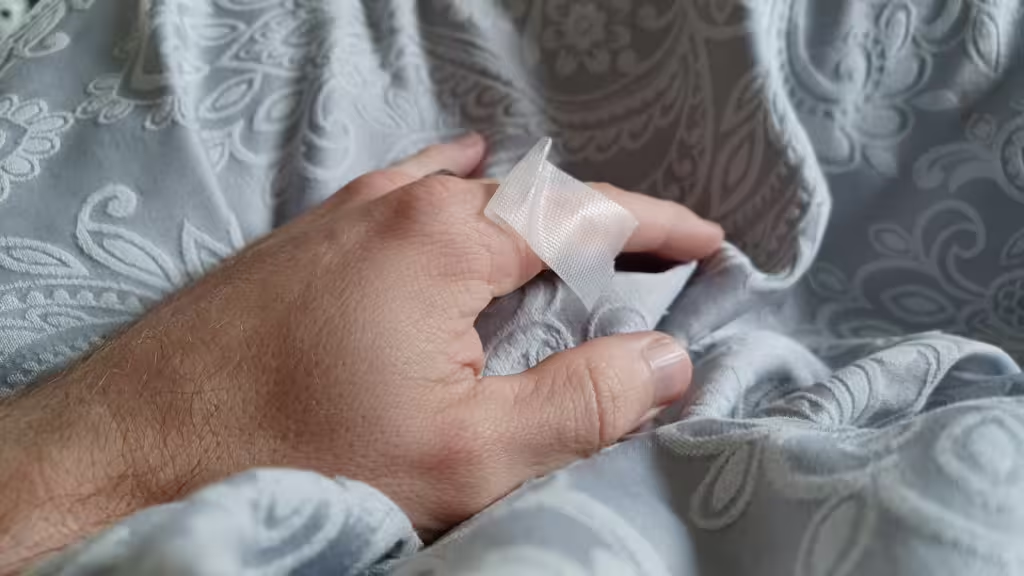
Within the first week this happened several more times. Additionally, during multiple nights I had the feeling of being unable to breathe during a dream and waking up in a panic, ripping the tape and gasping for breath. This is every bit as frightening as it sounds, and it leaves you wondering whether mouth taping is right for you.
The solution is to persist, but also to bring more awareness to how clear your airways are at night. If you suffer from allergies, particularly hay fever or dust, you may regularly have nights where your nose is completely blocked. This obviously makes nasal breathing impossible, and you need to address that before trying again.
Taking an antihistamine at night, or a nose spray solution, should allow you to breathe clearly throughout the night.
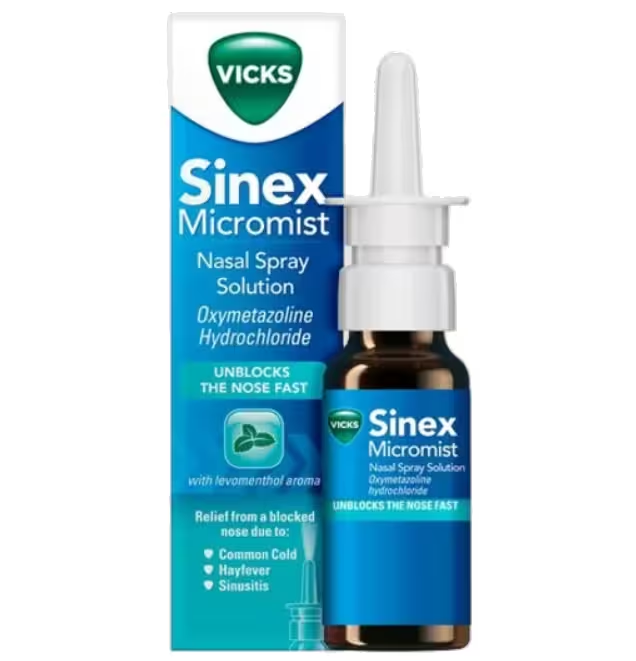
The good news is that the airways become larger and more efficient with continued practice. Every night of nasal breathing becomes that little bit easier as your body relearns to breathe in the way it was intended. Within two weeks I no longer had problems, with the exception of acute bouts of cold or flu.
Mouth taping results
While I enjoyed mouth taping enough to continue for 3 months, my initial plan was to only try it for 30 days. This was then compared to a consistent data set without mouth taping in the 90 days prior to starting. As you can see below, my Resting Heart Rate (RHR) and my Respiratory Rate both significantly improved with mouth taping. Respiratory rate is the number of breaths per minute you take during sleep.

Additional benefits were seen to my Heart Rate Variability (HRV) and my Recovery score, a measure of readiness to perform that day, though this was not significant.
For the full data set I switched to using my Oura ring. This was purely due to my membership ending on the Whoop strap midway through this experiment. There were still significant improvements to heart rate and respiratory rate, with an additional improvement to deep sleep duration of 9%.
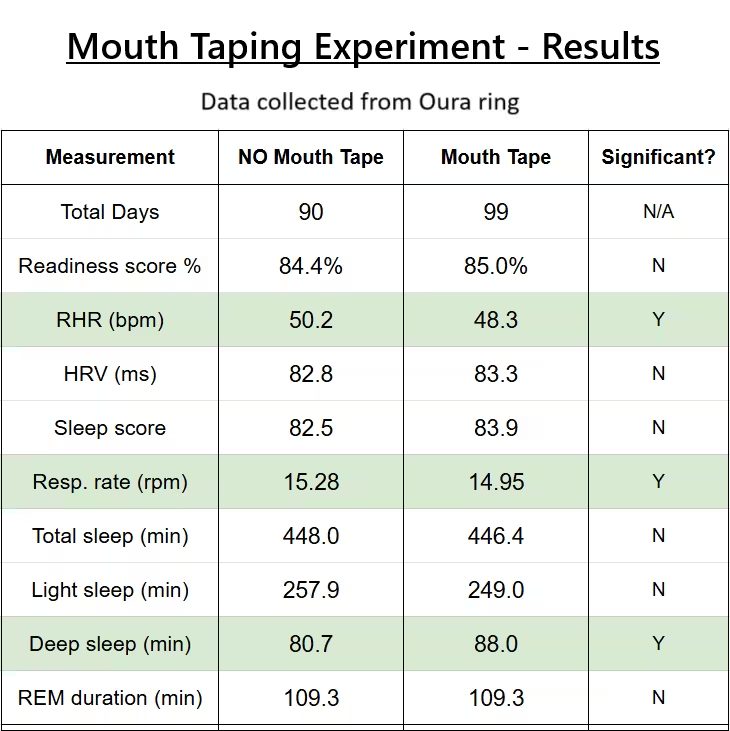
Another metric not in the table was restless sleep. This was down from 186 to 174 minutes when mouth taping, which was a significant improvement.
Conclusion
If you don’t have any health reason that makes this practice unsuitable, I would encourage everyone to try nasal breathing. Note that this doesn’t have to take the form of mouth taping overnight. There’s no reason why you wouldn’t see the same benefits during waking hours. Setting yourself reminders throughout the day, either taped to the fridge or on your phone, can help you stay consistent in your nasal breathing practice.
If you do choose mouth taping, ensure you have clear airways in the nose and throat before attempting it. Taping the middle third of the mouth allows you to breathe if you wake in a panic, while still ensuring your mouth stays shut throughout your sleep. Remember that this is only one of many ways to improve your health. Quicker wins could be had through regular exercise and eating nutrient dense food.
To learn more about nasal breathing and its benefits, I highly recommend reading Breath by James Nestor.

